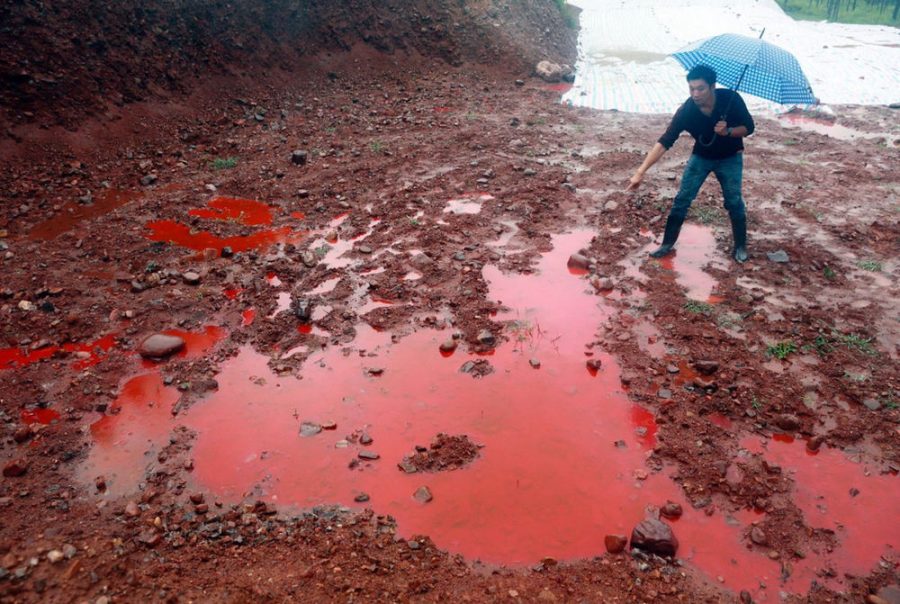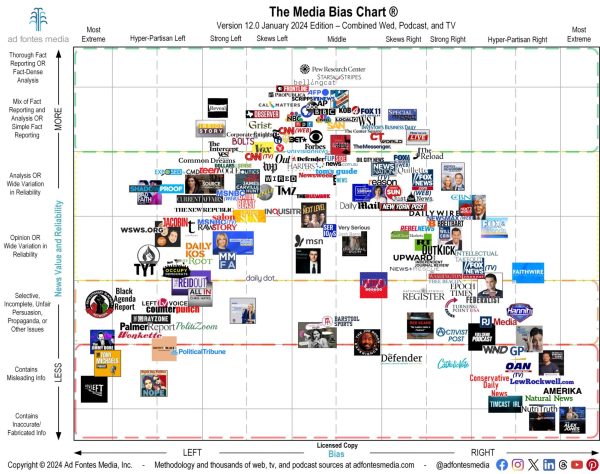Artificial Dyes are Destroying the Environment
During the Elizabethan era, organic materials such as insects, flowers, salts, spices, roots, berries and copper were the main components in clothing dye. Fast forward about 400 years. Helindone, anthraquinone, Diarylide Yellow and indophenol are just a few of the thousands of varying artificial dyes used on clothing in the 21st century. Look at these lists, and think about which one is better for a human being. Probably the natural materials first mentioned, right? Unfortunately, the clothing sitting on your back and hanging in your closet are probably not dyed with raw materials like lavender. Instead, they are likely laced with dangerous chemicals produced in a lab, surrounded by dozens of other toxins. Sadly, this is the case for artificial dyes in other consumer-goods, too, such as makeup. Makeup products use unsafe chemicals that saturate the pigment in lipsticks and help makeup last longer, but ultimately damage the skin. How can it be that the world advances in complex industries such as technology and scientific research, but synthetic dyes remain a repressive influence in the world that harm humans and damage our environment?
Fast fashion is a formidable aspect of the clothing industry that draws in consumers, chiefly because of its affordability. Like most other Gen-Zers, I am an unintentional supporter of fast fashion culture as I avidly shop at Urban Outfitters and often overspend after “browsing” through the racks at Zara. However, I—like other consumers—am also ignorant to the fact that clothing like my denim-washed jeans and flannel “shackets” are being manufactured in by cheap laborers in dangerous factories from third-world countries. Factory-workers in this industry inhale powdery pigments made from unknown substances, expose their skin to acid-filled vats to dye silk and wool and submerge clothing in sulfur dyes to ensure long-lasting color, just to name a few. Left unprotected, synthetic clothing dyes and chemical mordants damage skin by causing burns, eye irritation and can even lead to skin cancers. Furthermore, clothing dyes contribute to a major build-up of toxicity in water. Water tones fabric in the dying phase, but there is often water left over from this process that is released back into rivers, canals and streams because of weak regulations and enforcement. Not only is this a health hazard, but has ruinous effects on the environment and wildlife. In recent years, it has been proven that aquatic ecosystems are frequently disbanded and vegetation in wet regions goes extinct because of polluted water. So as long as we continue pressing the “Place Order” button, the planet will continue suffering the consequences.
It is refreshing to see that the makeup industry is making an effort to create more vegan, cruelty-free products; however, these products are ridiculously overpriced because of their natural qualities. Consequently, many users revert to drugstore brands like Maybelline and MAC Cosmetics. A classic product in the makeup industry is the coveted, glamorous and stunningly beautiful red lipstick. Icons such as Marilyn Monroe, Gwen Stefani and Taylor Swift trademarked the red lip that is worn by fans across the world. While this a classic part of pop culture, consumers neglect the fact that they are damaging their lips because the red pigment in red lipstick—along with other cosmetics—known as eosin can cause skin irritation, central nervous system depression and potential organ failure if used too frequently, inhaled or swallowed. It is with great shame that I admit to using animal-tested cosmetics in the past, funneling my money into these makeup companies. As a matter of fact, makeup companies actually feed off of users’ insecurities because they know people are often more focussed on making themselves look better as opposed to checking the ingredients. While I now check products to confirm they are cruelty-free, there are still many consumers who do not consider the animals they are killing each time they purchase a new eyeliner pencil. As a young woman with insecurities, I frequently purchase and wear makeup. While researching the harmful effects of makeup, however, I was struck with the insight that makeup can often do more harm than good. I still wear makeup, and in fact, I am wearing mascara and blush as I write this sentence—I am not advising against it. If I did that, I would be quite the hypocrite. But, I do urge consumers to learn about the products they use to ensure they are keeping themselves and animals free from harm.
The artificial dye epidemic is slowly eating away at the environment and its inhabitants, and soon enough, our planet will be an artificial wasteland. However, there are preventative measures we can take to save our planet and its population.

Kristyn Dentremont, Class of 2023, is co-Editor-in-Chief of The Searchlight. At Walpole High School, Kristyn is a captain of the girls' cross country...












